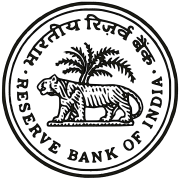Reserve Bank of India outlines plans for new fintech repository and cloud facility for FS firms
The Reserve Bank of India (RBI) has announced it plans to establish a fintech repository and a new cloud facility for financial services firms as part of its latest developmental and regulatory policy measures.

RBI proposes new fintech repository and cloud facility
According to the central bank, the repository will be used to capture “essential information about fintechs” for the benefit of regulators and stakeholders.
Indian fintechs will be encouraged, but not required, to deposit data relating to the nature of their activities, products and technology stack, as well as their financial information.
The RBI says the aggregated data will “aid in designing appropriate policy approaches”, and hopes to have the repository up and working by April 2024, to be led by its Innovation Hub.
Likewise, it plans to establish a new cloud facility for the country’s banks and financial entities, in what appears to be a deliberate shift away from an overreliance on the various public and private cloud facilities in use today.
The RBI expects this cloud facility to “enhance the security, integrity and privacy of financial sector data” and “facilitate scalability and business continuity” – a fair pursuit for a sector it says is maintaining “an ever-increasing volume of data”.
It has assigned the task of setting up and operating the facility to its wholly-owned subsidiary, Indian Financial Technology and Allied Services (IFTAS), but expects to transfer the operation to a separate sector-owned entity in due course.
The RBI has not disclosed a target launch date for the cloud facility, other than that it will be “rolled out in a calibrated fashion in the medium term”.
Transaction limits, e-mandates and lending frameworks
The announced arrival of the fintech repository and cloud facility comes in tandem with a cascade of regulatory adjustments also outlined in the RBI’s new measures.
For payment systems and the fintech sector specifically, these include proposals for recurring online payments, with transactions up to ₹1 lakh in certain categories set to be made exempt from additional factor authentication (AFA).
For India’s Unified Payments Interface (UPI), which is controlled by the National Payments Corporation of India (NPCI), caps on payments to hospitals and educational institutions will be increased from ₹1 lakh to ₹5 lakh per transaction to encourage the use of the UPI system for medical and educational services, respectively.
Further afield, the measures also address what the bank describes as “moral hazard issues” active in the spheres of lending, with a particular focus on pricing and credit management.
It’s seeking to create a unified regulatory framework on connected lending – where a borrower might influence the decisioning of the lender – for all its regulated entities.
The RBI is now also bring web-aggregators of loan products (WALPs) – otherwise known as online loan comparison platforms – under a “comprehensive regulatory framework”, which it says will promote operational transparency, customer centricity and more informed consumer decision-making.
It has continued this theme of unity with a final proposal for its frameworks governing the hedging of foreign exchange (FX) risks, following the commencement of an initial review three years ago.
This change specifically will bring all transaction types practiced in its FX markets, including over-the-counter (OTC) and exchange traded, under what it describes as “a single master direction”.
The new structure aims to boost operational efficiency and risk management and enable easier access to FX derivatives, especially for small-exposure users.
In essence, the measures announced by the RBI this week appear to display its continued drive to better connect all sides of its financial sector through the championing of data sharing, transparency and ease of collaboration.









































